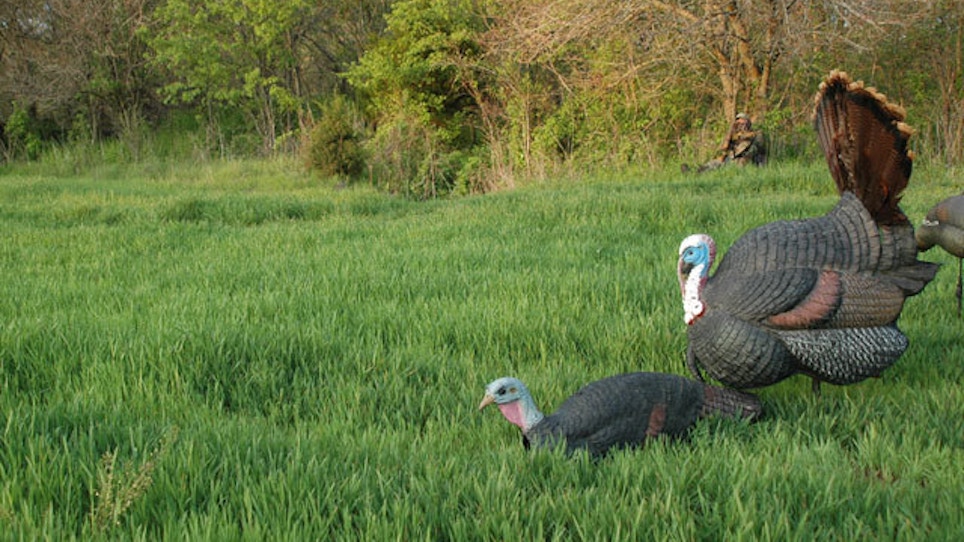Turkey hunters have many great decoy choices nowadays. Sometimes, though, multiple options can create confusion. With so many decoy postures available — feeding, breeding, submissive, alert, strutting and others — folks might wonder which type of fake to take afield and which to leave in the truck. Pro turkey hunters say that realism, the phase of the breeding season and the makeup of local turkey flocks are critical considerations.
“My favorite hen decoy is the feeder,” said Tad Brown of Flambeau Outdoors/M.A.D. Calls. “The feeding hen is the most natural position in nature. If you pay attention, most every gobbler/hen flock consists of feeding hens followed by a strutter. It does not get more realistic or relaxed than that. Breeding hens are good, too. It’s another natural position that elicits the desire to breed. But because the decoy is on the ground, it is hard for a tom to see at times, unless there’s a male turkey decoy atop the hen decoy — preferably a strutter.
“I work for a decoy company, and we try to offer the consumer every possible decoy posture to create any setup a hunter could want, but frankly, a couple of feeding hen decoys accompanied by a Walking Tom Upright Decoy or King Strut decoy is pretty realistic.”
Steve Stoltz, world-champion caller and Knight & Hale pro-staffer, also prefers basic, realistic setups, such as one feeding hen with an alert hen or a strutter decoy atop a hen decoy. However, he might not even use a decoy, depending on the terrain he’s hunting.
“I prefer decoys in field setups because they give the gobbler a visual,” he said. “ Turkeys are social birds, and in the wide open, they know good and well that if they hear calling, they should also be able to see exactly what’s making that sound.”
Ernie Calandrelli, public relations manager for Quaker Boy, considers timing and the social structure of turkeys before deciding on his decoy setup.
“It depends where they’re at in the breeding season,” he said. “I use a straight-up jake and feeding hen most of the time, unless there are a lot of jakes in the area. Then I go with a feeding and an alert hen.”
Brown agreed.
“Early in spring, when gobblers are fussing around and just starting to break up, a strutter or upright gobbler is hard to beat,” he said. “In years with lots of jakes, they run rampant and chase adult gobblers off, so the gobbler or full-strut decoy might attract more jakes than you want. Otherwise, a single jake in your spread of hens is less intimidating to an adult bird, and he might be more receptive to your spread.”
When using a gobbler decoy, pay attention to the most important feature.
“In all reality, the killing feature of any strutting decoy is the tail,” Brown said. “I swear that is all they see, and it’s why simple fanning with only a tail is so effective.”
Pay careful consideration to these factors when selecting decoys this spring. If you choose wisely, those fake turkeys might provide unforgettable encounters with the real thing.






